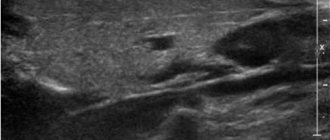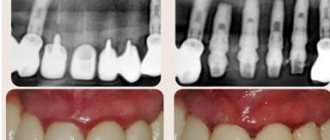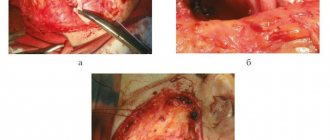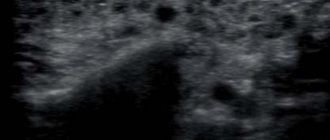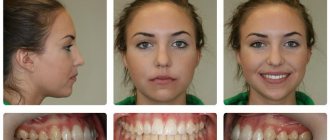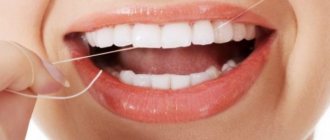Detailed description of the study
Salivary gland cancer is a malignant tumor of the salivary gland formed from epithelial cells. Tumors of the parotid salivary glands (PST) are a rare type of neoplasm. They mainly develop between the ages of 20 and 40. More common in men than in women. Tumors are usually located in the soft tissues of the face and often cause serious cosmetic defects, causing paresis of the facial nerve.
The main risk factors for developing salivary gland cancer are:
- Chronic inflammatory diseases of the oral cavity;
- Hormonal imbalances;
- Genetic disorders;
- Smoking;
- Nutritional factors (low vitamin content, high fat content in food).
Most often the tissues of the parotid salivary gland are affected - 80%, less often the tumor develops in the tissues of the submandibular salivary gland - 15%, sublingual or minor salivary gland.
The following options for the development of pathology are distinguished:
- Primary cancer (from the tissues of the gland itself);
- Secondary cancer (metastasis or germination from neighboring organs).
According to histological parameters, tumors of the salivary glands represent the most heterogeneous group of human neoplasms. More than half of them are benign formations.
Benign neoplasms of the parotid salivary glands are detected in more than 30% of patients who complain, malignant ones - in 65%. Among the morphological types of benign tumors of the parotid salivary gland, the most commonly diagnosed are pleomorphic adenoma (a benign formation that forms in the glandular epithelium), adenolymphoma, lipoma and a very rare adenoid cystic tumor (formed by epithelial cells lining the lumen of the gland).
Malignant tumor formations are most often represented by: mucoepidermoid cancer (formed by cells secreting mucus and epithelium) and adenocarcinoma. Acinic cell carcinoma also occurs, which mainly affects the tissue of the parotid salivary gland.
Usually, during examination of patients, palpation reveals a dense, painless formation in the area of the salivary glands, which, according to patients, grows generally very slowly. In approximately a third of cases, pain may be present.
The “gold standard” for diagnosing tumors of the salivary glands is aspiration puncture of the tumor followed by histological examination of the obtained material, carried out before surgery or intraoperatively. The diagnostic value of this method is up to 90%, because the tissue of the affected area is studied directly under a microscope.
Aspiration puncture (biopsy) is performed using a special needle under ultrasound control. The study allows you to confirm or clarify the diagnosis, track the growth dynamics of the tumor and analyze the changes that occurred during tumor therapy.
During histological examination, three indicators are assessed:
- Tumor size and extent of its spread (T);
- The presence of damage to regional lymph nodes by metastases (N);
- Determination of metastases in other organs and tissues (M).
Based on the degree of malignancy, there are three types of tumors:
- High differentiation, when the cells are similar to glandular epithelial cells, such formations grow slowly and often have a favorable prognosis;
- Low differentiation, when cells are very different from normal, is characterized by rapid growth and early metastases;
- Medium differentiation.
Prevention
To prevent any pathological processes in the OSJ, it is recommended:
- visit the dentist regularly;
- follow all the rules of daily oral care;
- strengthen immunity;
- promptly treat all viral and infectious diseases;
- eat sour vegetables and fruits (to stimulate saliva production).
So, the salivary glands are the largest salivary glands in the human body, producing about a third of the total secretion volume. These formations are susceptible to inflammatory processes of infectious and autoimmune origin, they can become foci of the formation of benign and malignant tumors, and salivary stones also develop in the OSJ. Careful care of the oral cavity, balanced nutrition and timely medical assistance at the first symptoms of “local” problems will help to avoid complications of the most common diseases of the salivary glands (from dysfunction of the salivary glands to sepsis).
References
- Malignant tumors of the salivary glands, Clinical guidelines. Association of Oncologists of Russia, 2022. - 55 p.
- Balkanov, A.S., Bychenkova, O.A., Sipkin, A.M. and others. Combined treatment of parotid salivary gland cancer. Almanac of Clinical Medicine, 2022. - No. 4. - P. 309-313.
- Polyakov, V.G., Shishkov, R.V., Ermilova, V.D. and others. Children's Oncology, 2004. - No. 1. - P. 45-47.
- Carlson, E., Schlieve, T. Salivary Gland Malignancies. Oral and maxillofacial surgery clinics of North America, 2022. - Vol. 31(1). — P. 125-144.
Anatomical and physiological features of OSJ
OSJs are localized in the parotid-masticatory part of the face, under the skin, below and in front of the ears. From above, the formations approach the zygomatic arches, from below they come into contact with the angle of the lower jaw, and from behind - with the anterior edge of the sternocleidomastoid muscle. The parotid salivary gland is surrounded by a capsule (fascia).
Its structure is uneven; most of the formation is dense, but there are also loose areas. The fascia protrudes into the OSJ and divides it into lobules. Thus, we can say that the OSJ has a lobed structure. The parotid glands are well supplied with blood, penetrated by a large number of large and small vessels, nerves, and lymph nodes.
Important! The main function of OSJ is the secretion of saliva. The parotid glands produce a secretion of liquid consistency with a high concentration of sodium and potassium salts, as well as significant amylase (enzyme) activity. During the day, both OSGs secrete approximately 0.2–0.7 liters of saliva (this is almost a third of the total volume of secretion produced during a given period by all salivary glands of the human body).
Who will help with inflammation of the salivary gland?
There may be several reasons for feeling unwell. And it is not always clear which doctor to contact with a particular ailment. Our expert will help you navigate. In order to get a complete answer, in the comments to this article you need to:
- briefly outline the main symptoms;
- make the question as specific as possible;
- write a question in the comments under this article.
You will find answers to your questions in the next issue of the section “What kind of doctor do I need?”
Question: How to treat inflammation of the salivary gland and who to contact with this disease?
Inflammation of one or more salivary glands - sialadenitis. As a rule, it is accompanied by swelling of the face, pain and other symptoms and can lead to the formation of a purulent cavity, sclerosis of the gland and even the development of a tumor process.
According to the localization of the salivary glands, one can distinguish: mumps (inflammation of the parotid gland), sublinguitis (inflammation of the sublingual gland), submaxillitis (inflammation of the submandibular gland), macrosialoadenitis (inflammation of the major salivary glands), microsialoadenitis (inflammation of the minor salivary glands).
The main symptoms of sialadenitis include:
- pain while chewing;
- difficulty opening the mouth;
- redness, swelling of the cheek or neck;
- dry mucous membranes;
- unpleasant taste in the mouth and impaired taste perception;
- general deterioration of health.
Sialadenitis can be specific (for tuberculosis, syphilis, actinomycosis) and nonspecific (bacterial and viral). Bacterial sialadenitis occurs more often in the presence of foci of acute or chronic infection of the oral cavity; it can be caused by staphylococci, streptococci, as well as bacteria of anaerobic microflora (caries, pulpitis, periodontitis, tonsillitis, etc.). Viral sialadenitis is a consequence of exposure to viral agents: influenza virus, Epstein-Barr virus, cytomegalovirus, herpes, adenovirus.
The patient needs to contact a dental surgeon, the specialist will conduct an examination and diagnosis, choose a treatment strategy (conservative or surgical), and, if necessary, refer you for a consultation to a maxillofacial surgeon.
_____________________________________________________________________
Question: My hair is falling out a lot. Thyroid hormones are normal. Who should I contact?
Pathological hair loss – alopecia. The most common type of hair loss is diffuse telogen effluvium. As a rule, this leads to a decrease in hair volume, but does not lead to complete loss.
Let us remember that telogen is the shedding phase. In this phase, the hair papilla is torn off from the vessel that feeds it and the nerve ending. Reasons for this type of hair loss:
- deficiency conditions: anemia (due to blood loss due to menstrual irregularities, heavy menstruation, etc.), latent iron deficiency, deficiency of a number of vitamins and minerals in the body, lack of protein, etc.;
- endocrine changes;
- prolonged stress;
- past infectious diseases, etc.
The second most common type of hair loss is androgenic (or androgenetic) alopecia - hereditarily caused progressive hair loss in men and women under the influence of male sex hormones - androgens. In men, there is a shift of the marginal hair line of the forehead upward within 1 cm, and then thinning of hair in the area of bald patches and advancement of the hair thinning zone to the crown and parietal region, followed by complete baldness of these areas.
In women, complete baldness is not observed, but hair thinning is noted in the frontoparietal zone, and the central parting visually becomes wider. As a rule, with this type of alopecia, women have endocrine disorders (polycystic ovary syndrome, adrenal gland diseases, etc.), and in addition to hair loss on the head, there is increased hair growth in other parts of the body, the appearance of acne, and menstrual irregularities.
Rarer types of alopecia include:
- Alopecia areata, which is more common in children and adolescents, is caused by the immune system mistakenly attacking hair follicles;
- anagen hair loss (hair loss during the anagen/growth phase as a result of chemotherapy);
- cicatricial alopecia due to diseases such as discoid lupus erythematosus, scleroderma, lichen planus, etc.;
- alopecia as a result of infectious diseases: trichophytosis, microsporia.
The patient needs to see a trichologist. The specialist will conduct an examination and specialized studies - trichoscopy and phototrichogram, and, if necessary, refer you to other specialized specialists (endocrinologist, gynecologist, etc.) and for additional research methods, including clinical, laboratory and biochemical methods.
occupational therapist, head of the hospital “Clinics for the whole family 1 + 1”
answered your questions Photo depositphotos.com The author’s opinion may not coincide with the opinion of the editors
Interpretation of ultrasound results of the salivary glands
Normally, the salivary glands have a clear contour, thanks to which they are clearly visible on ultrasound. The largest in size are the parotid glands. Their normal sizes reach 22-25 mm in thickness, 47-56 mm in length, 25-35 mm in width. For the sublingual glands, the normal length is 19-22 mm, thickness and width - 10-16 mm. The standard size of the submandibular glands: 24-30 mm in length, 14-18 mm in width.
The results of the sonographic examination are interpreted by a functional diagnostics specialist who performs the procedure. He compares the received data with reference parameters. Identification of individual pathologies or complex deviations based on the assessment of various diagnostic factors serves as the basis for writing a conclusion.
During an ultrasound, a specialist analyzes the size of the glands, their location, blood supply, and assesses the condition of the lymph nodes. In addition, the echogenicity indicator (the ability of organ tissue to transmit sound) is very important for the quality of sonography of the ear glands. Reference echogenicity values for each organ are different. This indicator cannot be neglected, because reduced echogenicity values when making a diagnosis may indicate the presence of an inflammatory process, swelling, and high values – a tumor.
If sonography of the salivary glands reveals neoplasms in a patient, he is referred for additional diagnostics. As a rule, the next procedure for such a patient is contrast magnetic resonance imaging of the soft tissues of the neck. In rare cases, histology, puncture, and biopsy are performed to accurately determine the nature of the formation. In any case, each of these diagnostic methods helps to determine whether the detected tumor is benign or malignant. Material is taken during puncture and biopsy using ultrasound.
Features of preparation for ultrasound of the salivary glands
Preparing for a sonographic examination is simple, so both children and adults can cope with it. It is recommended to refrain from eating food at least 4 hours before the expected visit to the diagnostic center. It is also advisable to perform thorough oral hygiene on the eve of the examination. For this purpose, it is not necessary to resort to the use of any specific cleansers; it is enough to carry out standard cleaning of the oral cavity with toothpaste, teeth rinse, or rinse your mouth with plain water. Don't worry: there is no pain during the procedure.
Benefits of salivary gland sonography
This diagnostic method is recognized as fast, reliable, reliable, accessible and 100% safe. That is why it is so popular not only in Russia, but also abroad. Moreover, the study has virtually no contraindications. The presence of implants, foreign bodies in the body, or pacemakers in the patient does not in any way affect the procedure.
Among the advantages, one can also highlight the possibility of conducting an unlimited number of examinations, if necessary. Since the study does not cause discomfort or unpleasant sensations, it can be performed even on infants.
Types of procedure
Sonography of the salivary glands can be performed from the inside or outside of the oral cavity.
The diagnostician spends no more than 15-20 minutes to complete the study. The procedure does not cause any discomfort. The patient is placed in a lying position on the couch with his back down, a special pillow is placed under his head, which allows him to place his head slightly back. Sometimes the doctor may ask you to turn your head a little to the right or to the left. When diagnosing the parotid gland, the device's sensor is placed in the ear area. When the submandibular and sublingual glands are examined, the probe of the device is placed in the oral cavity. Following the protocol, the diagnostician carefully evaluates the condition of all salivary glands individually, when pathologies are detected, he determines the area of changes, parameters, structure, size, then processes the information received, compares it with the norms and gives a conclusion.
